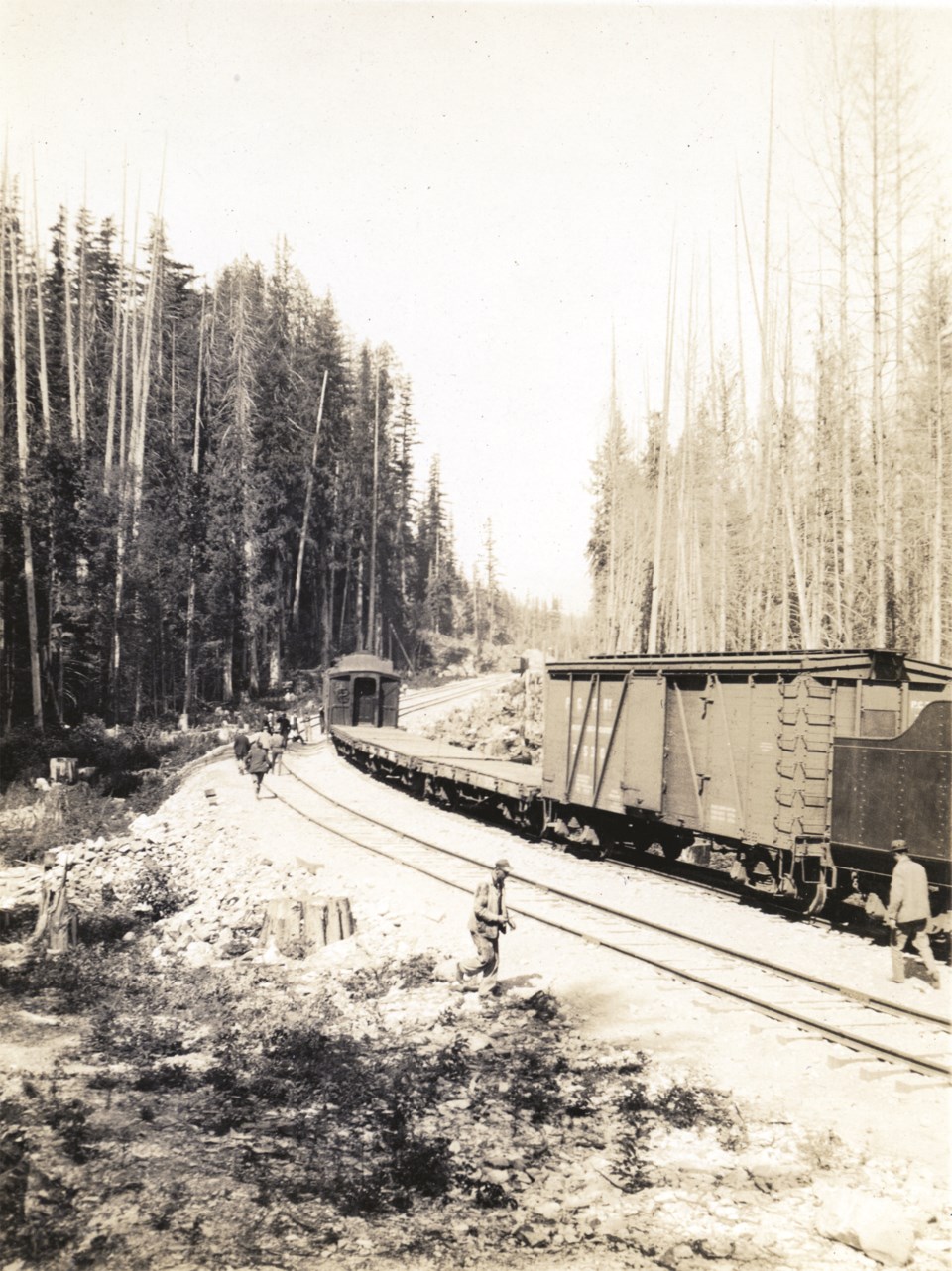When the museum conducts oral history interviews, one of the questions asked is how the interviewee first came to the Whistler area. This question is often interpreted in one of two ways, with answers as varied as the individuals. Some interpret it as why they visited or moved to the area, while others answer more literally (one memorable answer was simply “car”). In a 2012 conversation with Kenneth Farley, he provided answers for both variations, including a description of travelling from Vancouver to Alta Lake in the 1940s, featuring at least three different means of transportation.
Kenneth’s parents, Frank and Hilda Farley, first visited Alta Lake in 1943 and rented a cabin at Jordan’s Lodge on Nita Lake for a week in the summer. Frank was a keen fly-fisherman and so the couple decided to buy property along the railroad tracks by Alta Lake from a Mr. Noble, who they knew from their home in Vancouver’s Kerrisdale neighbourhood. According to Kenneth, he came to Alta Lake “to see what it was all about” after his parents told him they had already bought the property. This was the first of many visits for Kenneth and his family.
The Farleys’ trips began in Kerrisdale on 49th Ave. From there they would walk eight blocks down to 41st, where the family caught the No. 7 streetcar, which would take them downtown. The next step was to walk across the overpass above the freight yards to the waterfront, where the Union Steamship would be waiting.
The trip aboard the Union Steamship was hardly an express route. After sailing through the Narrows, the ship stopped at most of the small colonial settlements along the Howe Sound, including Woodfibre and Britannia, before arriving in Squamish. As Kenneth recalled, it was often so windy in Squamish that the journey was made even longer as the captain faced the challenge of docking. Upon arrival in Squamish, Kenneth recalled navigating around “great big puddles full of water” to the Chinese restaurant, where they would eat apple pie while waiting for the train to be loaded with its freight. Eventually, the engineer would whistle and everyone would run to board the train before it went “rambling off in a cloud of dust and smoke.”
According to Kenneth, the cars used by the Pacific Great Eastern Railway were “real antique,” with sliding windows, a potbelly stove for warmth, and oil lamps suspended from the ceiling. The views along the route, however, made up for any discomfort on the train. Passengers could even disembark at Brandywine Falls to walk over and take a look at the falls before continuing north.
The train usually reached the Alta Lake Station around 5:30 p.m., and the Farleys would leave their baggage there while they walked to their cabin. When making the first trip of the spring, they often had to fix the chimney (which the snow had pushed over) and bail out the skiff made of rough planks. Once the skiff was emptied, someone would have to row back to the station to collect the baggage and then row back, finally completing the journey.
Kenneth remembered one memorable occasion travelling with his wife Shirley and sons Patrick and Greg when an additional stage was added to the journey. As he recalled, “It was raining, rain was slashing against the windows, and the train stopped in the middle of nowhere. And people started to get out of the train and go across the ditch on a 2x12 plank and the conductor was helping them across. And I thought, ‘Gee, this must be some new settlement or something or other,’ and then he came and said, ‘It’s your turn.’” There had been a derailment ahead and the passengers were taken to dump trucks with makeshift benches that took them up rough logging roads to a point further along the railway. There they boarded what Kenneth described as “vintage rolling stock,” with he and his family riding the caboose at the end.
The Farley family began driving to Alta Lake after a road was constructed from Vancouver in the 1960s, though the journey could still be eventful. Kenneth Farley’s recollections of earlier trips, however, provide useful information about how visitors used to travel.





